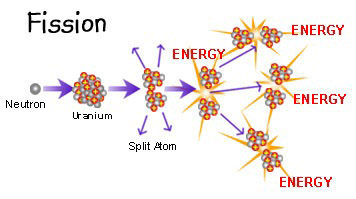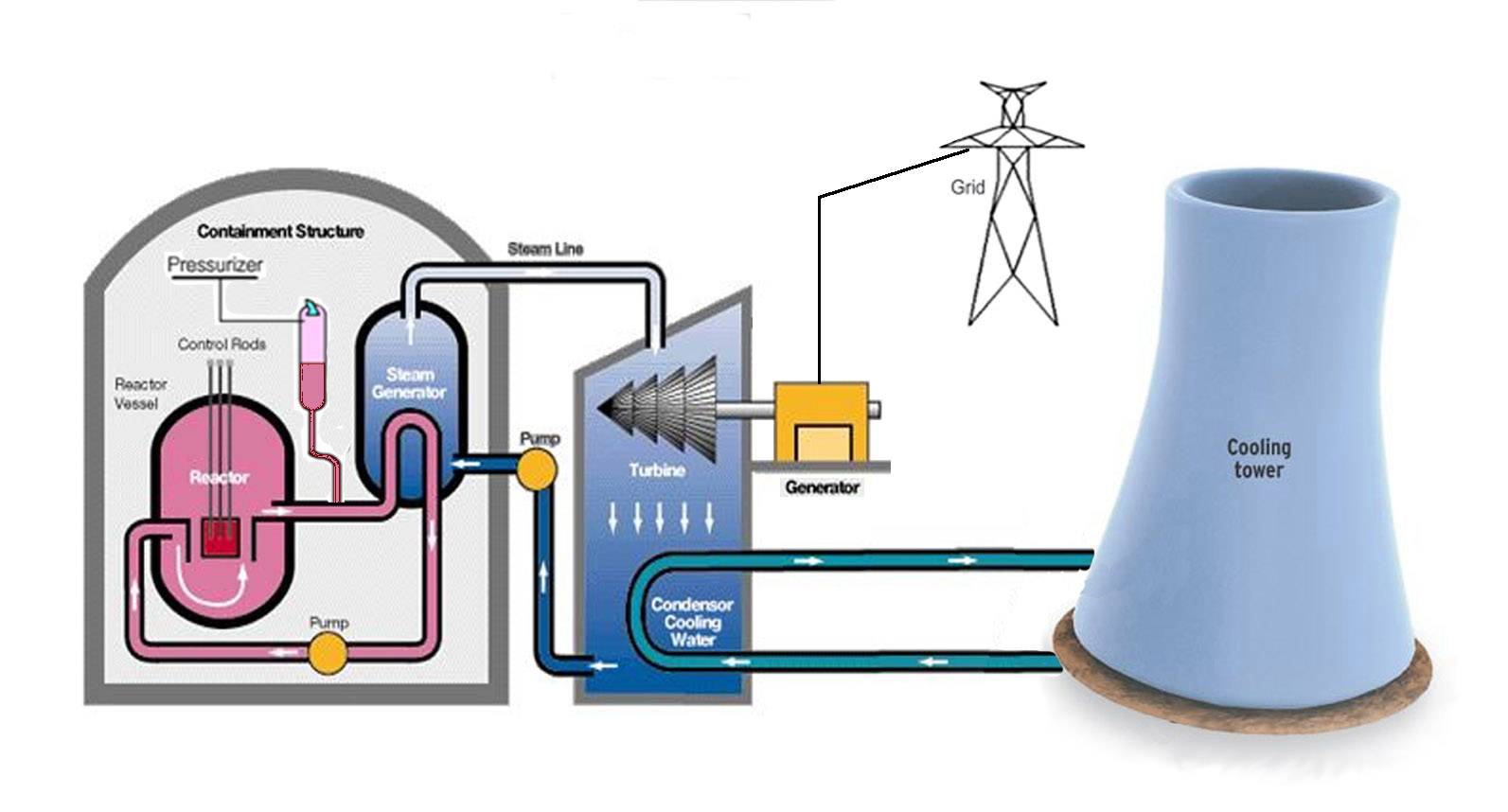

A tall, thin, single-vessel design. NuScale Power’s compact reactor, designed to be modular.
Water heated by the core ascends in a chimney-like metal structure inside the reactor, then spills over the top of the chimney and sinks back down along the inside walls of the reactor to repeat the journey.
Water passes over a long coil of pipe, transferring much of its heat to water inside the coil. Lower pressure in the coil allows the water to boil, and the resulting steam travels up the pipe to power a turbine. The NRC is expected to approve it in 2015.
Multiple units could replace existing large reactors, simplifying the design and reducing cost.